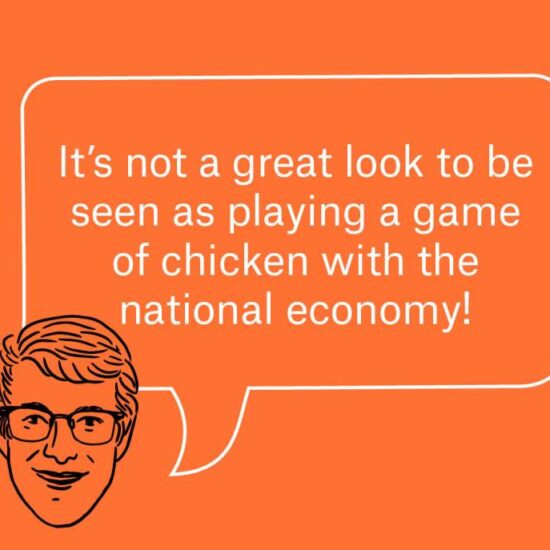Transcript
Santul Nerkar: Inflation in America is high. You’ve probably noticed when you’ve gone to the grocery store or gas station. But ordinary Americans aren’t the only ones unhappy with our current 6 percent inflation rate. The Federal Reserve isn’t thrilled, either. The number that the Fed would like to see — its target inflation rate — is 2 percent.
But why did we decide that 2 percent inflation is the way to go? Why not 3 percent? Or 12 percent? For that matter, why not 0 percent??
First thing’s first — the Fed thinks that 0 percent inflation is bad. At that rate, we risk the opposite phenomenon: deflation, where prices drop. Now, lower prices might sound like a good thing. But periods of deflation can actually lead to economic downturns, as research has found it’s bad for wages and overall growth. We’ve seen this multiple times in U.S. history, like during the Great Depression and the Great Recession. One reason is that people tend to delay big purchases when they see prices dropping, because they figure they might get a better deal in a few months. The result is that companies struggle, they lay off employees and wages fall.
Meanwhile, inflation can be beneficial. Let’s say you’ve recently bought a car, and you got a $10,000 bank loan to pay for it. A year from now, with, say, 2 percent inflation that $10,000 won’t be worth as much. At the same time, you’ve maybe gotten a cost-of-living raise to keep up with the value of the dollar. And now you can take some of that extra money you have and put it toward something else you want — which has the added benefit of spurring on the economy.
So, economists generally agree that some amount of inflation is important. And central banks around the world have settled on 2 percent — including in the U.S., where it was officially made the standard in 2012.
But there’s no ironclad rule of economics that says 2 percent inflation is the goldilocks of monetary policy. In fact, some have argued that a 2 percent inflation target is too low — particularly today, when the cure for inflation might be worse than the disease. Typically, to lower inflation, you raise interest rates so that prices go down but it’s more expensive to borrow money. But while inflation has come down since the Fed started raising interest rates in March 2022, it hasn’t come down as quickly as many experts hoped or expected. And if the Fed continues to raise interest rates, it could cause a recession. Businesses would struggle to grow and people would buy fewer houses and cars because they’d have to take on too much debt.
As a result, some economists have said that pursuing a 2 percent inflation target will create an unacceptable level of economic pain for Americans. Others argue that a higher inflation target of 4 or even 5 percent is actually better for a healthy economy, based on research of economic growth in countries with different levels of inflation.
There are inherent tradeoffs with every level of inflation. Run the economy too hot, and it could boil over and make money worthless. Bring it down too quickly, and people feel the pain of mass layoffs and less money in their pocket. That’s the puzzle that Fed policymakers will have to piece together over the coming months.




